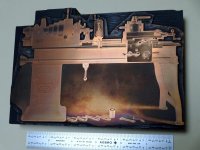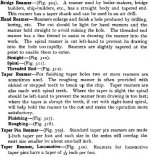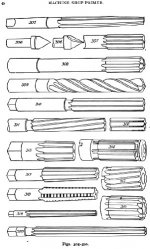archibald tuttle
Plastic
- Joined
- May 27, 2015
. . . according to the depictions i'm seeing maybe the taper is shorter on a car reamer and the full reamer diameter present for a longer distance of the cutting length.
specifications i've found for these reamers don't include the straight cutting length so i'm guessing by appearance.
thanks
specifications i've found for these reamers don't include the straight cutting length so i'm guessing by appearance.
thanks










